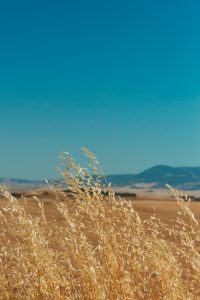
The allure of mountain landscapes has captivated adventurers and photographers for centuries. Towering peaks, dramatic cliffs, and sweeping vistas offer a visual feast that challenges and inspires in equal measure. If you’re passionate about both travel and photography, embarking on a mountain photography journey can be a truly transformative experience. In this guide, we’ll explore the essentials of mountain photography travel and provide tips to help you capture the majestic beauty that these natural wonders offer.
Understanding the Terrain
Mountains come in various shapes and sizes, each with its own unique character. Before embarking on your mountain photography expedition, research the specific region you plan to explore. Understanding the terrain, weather patterns, and seasonal changes will empower you to make informed decisions about when and where to shoot. Whether it’s the rugged peaks of the Rockies, the serene beauty of the Alps, or the mystical landscapes of the Himalayas, every mountain range presents its own set of challenges and opportunities.
Gear Essentials
Packing the right gear is crucial for mountain photography travel. Beyond your camera and lenses, consider bringing a sturdy tripod to ensure stability in challenging conditions. A reliable backpack with compartments for your equipment, water, and snacks is essential for extended treks. Don’t forget extra batteries and memory cards, as opportunities to recharge may be limited in remote mountainous areas.
Investing in quality outdoor clothing and footwear is also vital. Mountains often bring unpredictable weather, so be prepared for sudden changes in temperature and precipitation. A durable, weather-sealed camera bag will protect your gear from the elements.
Timing is Everything
The magic of mountain photography often lies in capturing the interplay of light and shadows. Sunrise and sunset are ideal times for shooting, as the sun’s low angle bathes the landscape in warm hues, creating stunning contrasts and long shadows. Plan your hikes and excursions to coincide with these golden hours, and you’ll be rewarded with breathtaking images.
Composition Techniques
When photographing mountains, consider incorporating foreground elements to add depth and scale to your images. Rocks, trees, or bodies of water can serve as compelling anchors that lead the viewer’s eye into the frame. Experiment with different compositions, such as leading lines or framing, to enhance the visual impact of your photos.
Additionally, pay attention to the rule of thirds, a fundamental composition principle. Position key elements like mountain peaks or interesting rock formations along the imaginary gridlines to create a more visually appealing image.
Embracing the Elements
Mountainous terrain often means dealing with challenging weather conditions. Rain, snow, and wind are part of the mountain experience, so be prepared to adapt. Use lens hoods and lens cloths to protect your equipment from moisture and debris. A rain cover for your camera and backpack can be a lifesaver when the weather takes an unexpected turn.
Local Guidance
Local guides and experienced mountaineers can provide invaluable insights into the best photography spots and hidden gems. Engage with local communities to gain a deeper understanding of the cultural and environmental significance of the mountains you’re exploring. This not only enriches your travel experience but also adds a unique storytelling dimension to your photography.
Embarking on a mountain photography travel adventure is not just about capturing breathtaking images but also immersing yourself in the awe-inspiring beauty of nature. By understanding the terrain, packing the right gear, timing your shots, employing composition techniques, embracing the elements, and seeking local guidance, you’ll elevate your photography to new heights. So, grab your camera, lace up your boots, and get ready to explore the world’s most majestic peaks through the lens of your own unique perspective.








